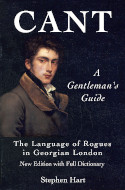THE CANARY-HOUSE IN THE STRAND
There is a rare Token of this house, with the date, 1665. The locality of the "Canary House in the Strande," says Mr. E. B. Price, "is now, perhaps, impossible to trace; and it is, perhaps, as vain to attempt a description of the wine from which it took its name, and which was so celebrated in that and the preceding century. Some have erroneously identified it with sack. We find it mentioned among the various drinks which Gascoyne so virtuously inveighs against in his Delicate Diet for daintie mouthde Droonkardes, published in 1576: "We must have March beere, dooble-dooble Beere, Dagger ale, Bragget, Renish wine, White wine, French wine, Gascoyne wine, Sack, Hollocke, Canaria wine, Vino greco, Vinum amabile, and al the wines that may be gotten. Yea, wine of its selfe is not sufficient; but Suger, Limons, and sundry sortes of Spices must be drowned therein." The bibbers of this famed wine were wont to be termed "Canary birds." Of its qualities we can perhaps form the best estimate from the colloquy between "mine hostess of the Boar's Head and Doll Tearsheet;" in which the former charges the latter with having "drunk too much Canaries; and that's a marvellous searching wine, and it perfumes the blood ere one can say, What's this?"[36]
[36] We learn from Collier's Roxburghe Ballads (Lit. Gaz. No. 1566) that in the reign of James I. "sparkling sack" was sold at 1s. 6d. per quart, and "Canary—pure French wine," at 7 pence.
John Timbs
Club Life of London Vol. II
London, 1866

